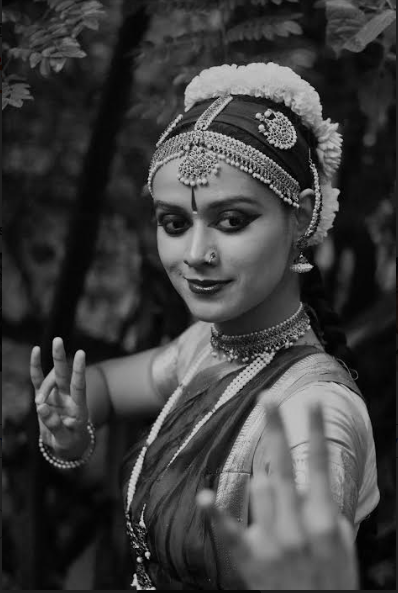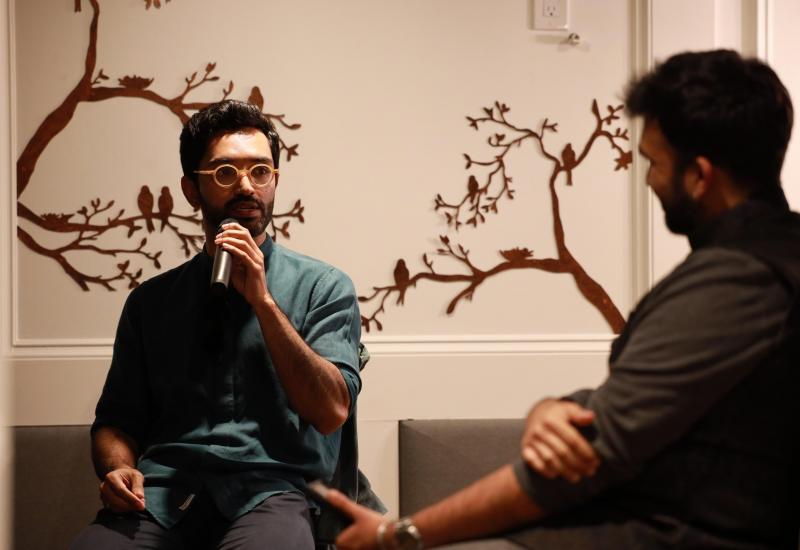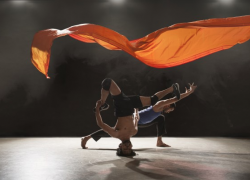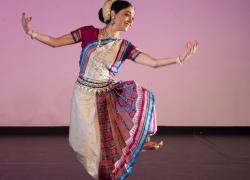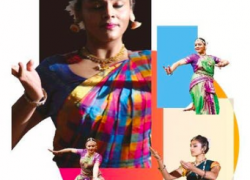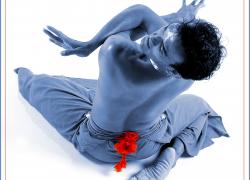Introducing our new writer – Durga Tilak
Bharatanatyam dancer and mechanical engineer Durga Tilak has crossed continents in pursuit of her academic studies, but her love and devotion to dance is something that has followed her. Pulse caught up with Durga when she responded to an open call-out for dance writers. Her interest in looking at dance through a wider lens – she raves about a wide-ranging podcast that has absorbed her (Amit Verma's The Seen and Unseen) which demonstrates her appetite for thinking about dance broadly also from a socio-economic perspective. This of course, perked our interest.
The only child of economist parents, Durga grew up in Pune in a household three generations deep. She lists her grandparents as the biggest influence in her life in terms of providing models as ‘good human beings’ with kindness and compassion. It was a home that was full of books and music, open discussions and debate. Classical music, mainly Hindustani, rang out at home. ‘My safe place is still Pandita Veena Sahasrabuddhe and Pandit Jasraj’. Pune is a city that is steeped in the classical arts and it is unsurprising that Durga was exposed to so much music from a young age.
Dance training started for Durga from the age of four, with a year-and-a-half in kuchipudi, but then she changed to bharatanatyam under Dr Parimal Phadke. The latter became a parental figure for her. She says ‘He honed my curiosity and instilled a set of core values related to dance, aesthetics, an approach that forms the bedrock of everything I do today in dance (and sometimes, even outside). I have now been under his watchful eye for nearly twenty years’.
Durga has taken annually, over a ten year period, bharatanatyam exams conducted by the Akhil Bharatiya Gandharva Mahavidyalaya Mandal (ABGMVM), Miraj. The ABGMVM is the oldest board of examinations that awards degrees in classical music and dance. She holds a Nritya Alankar (a master's degree), which was awarded in 2017 (a year before she graduated with a bachelor's degree in mechanical engineering).
Durga has a shining academic career, winning the Vice Chancellor's Excellence Scholarship from Pune to Newcastle University in the UK for a Master's degree (also in mechanical engineering). She is currently a doctoral researcher at the School of Chemical, Materials, and Biological Engineering at the University of Sheffield.
What about Durga as a dancer? I have watched Durga perform (on YouTube – links below) a classical repertoire and a more personal piece that was created for the Emerge platform at Leicester for Nupur Arts led by Smita Vadnerkar and mentored by Kamala Devam. Durga’s performance is technically faultless – one can see her years of training. Beyond that there is a spark to her dance: she can engage with her abhinaya, which is naturalistic, and her interpretation has intelligence and a brightness. Her choice of music, a sarangi track and ensemble of drums, guitar and sitar (Anirudh Verma Collective) has a modern and upbeat feel; and a poem on the qualities of obsidian and quartz gives another layer which makes the piece Sa(n)dness appealing to the mind and the eye. Sa(n)dess won the Art Salad award for collaboration across art forms selected by Garage Arts, a Houston-based arts charity.
Durga was keen to join a mentorship programme that Seeta Patel Dance Company was running. She was selected but could not participate due to the restrictions on her student visa.
In the meantime, we are looking forward to a monthly blog from Durga in which she will look at her life as a student and dancer in the UK. As editor of Artling and as a blogger https://thenextballav.wordpress.com/ Durga has shown her commitment to dance writing.
It will be interesting to see how Durga’s dance and dance writing develops with her exposure to England and to South Asian dance in the UK. Pulse wishes her success in her ventures in the UK and beyond.
